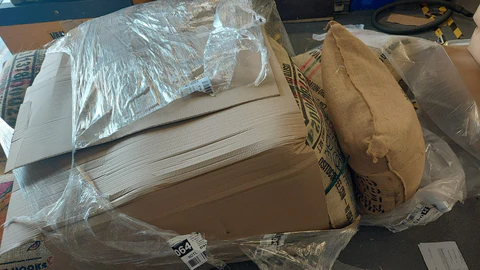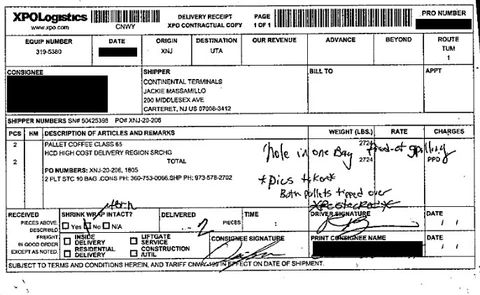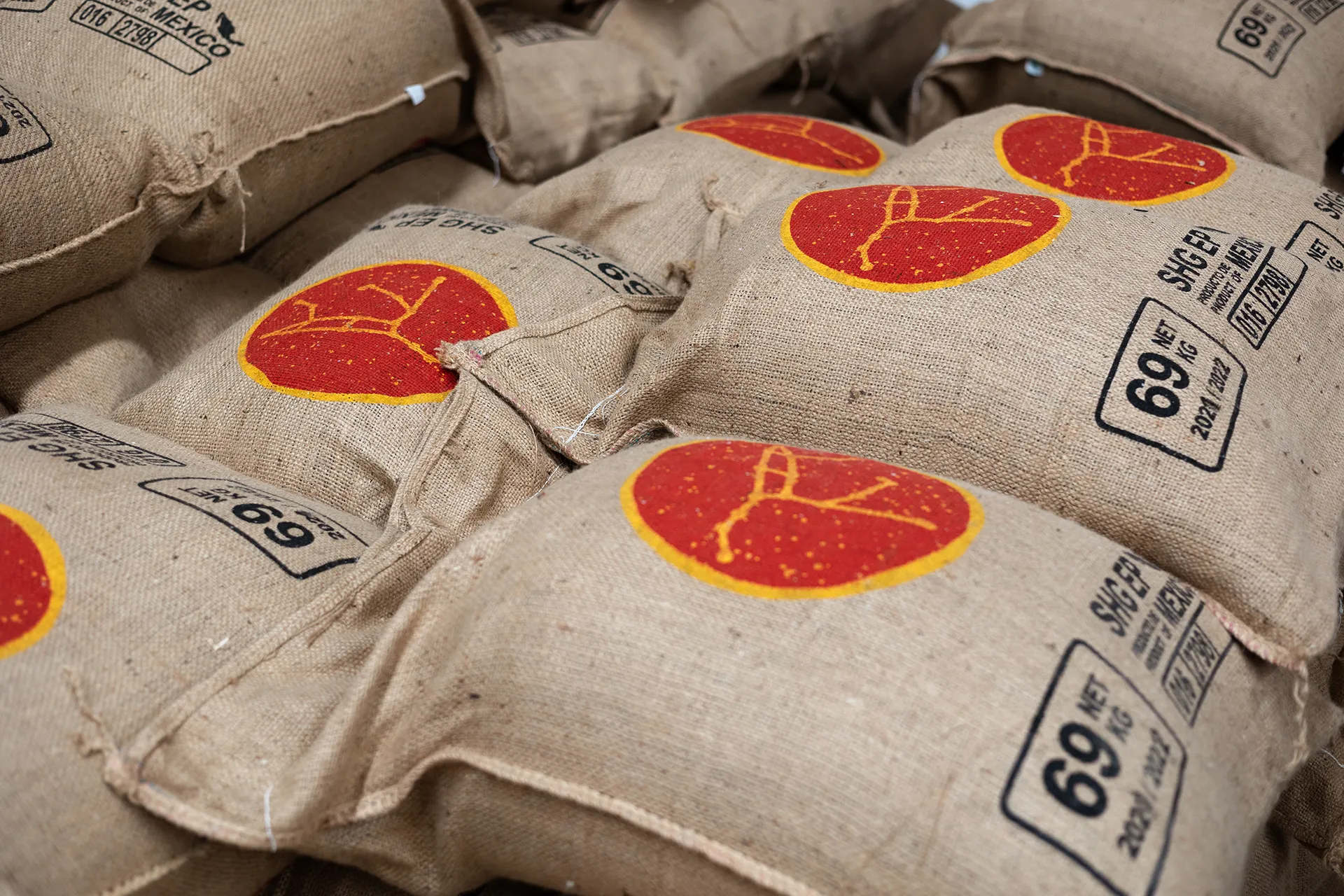Is there anything more upsetting than finding your eagerly awaited coffee delivery in a state of disarray?
Well, yeah: finding out that your cargo claim is rejected because of an avoidable error!
Deliveries gone awry seem to be on the rise. We’ve been hearing about more busted pallets, toppled towers, punctured bags, and even partially missing orders more often than usual. It’s a bummer, and it’s frustrating, and sometimes there’s not much to be done.
But, friends, it’s not all doom and gloom! There are ways to mitigate your losses and ease your headaches. Check out our list of best practices for receiving deliveries, and, as always, reach out to logistics@ositocoffee.com with any questions.

Basic Gameplay
1. Check each bag for the correct ICO/marks and physical integrity before signing the Proof of Delivery (POD). This is your right and your responsibility.*
2. If anything is damaged — from wrappings and strappings to the pallet itself to GrainPro — make a note on the POD.
3. Record all damage with written notes and photos to include in your claim.
– If you don’t take the time to write all the notes in duplicate on the POD, at least take a photo of the marked up copy you’re sending with the driver.
– Snap pics of bags spilled in the truck. Commemorate a torn bag with a photo.
– Weigh and record any lossage from a damaged bag.
*Remember: the delivery terms of your contract reads ‘FOT ,’ which means that you, the buyer, accept ownership of coffee at the moment it’s loaded onto the truck headed your way, including all risks associated with that freight arriving safely to you. (It’s the same way we import containers: we assume ownership and risk when boxes are loaded onto their ships.) We hate saying no to you, our friends, our partners, but Osito cannot be financially responsible for reimbursing you for weight loss or bag shortages once the coffee leaves the warehouse. We’re here to help, and we’ll do what we can, but without concrete evidence, without properly marked delivery paperwork, we can’t ensure a successful claim.

Leveling Up
- Write up your roastery’s protocols for receiving deliveries. Print it out. Keep it somewhere handy, so people can refer to it when the driver’s there. (Pro tip: tape it to a clipboard for extra points.)
- Make a copy of incoming releases available to anyone who might accept a delivery — it’s the easiest way to check bag marks and expected bag numbers.
- If you’re having repeat problems with a carrier (i.e., Ward, XPO, R&L, et al.) — even if the problems aren’t catastrophic — let your freight organizer know you’d like to avoid booking with them for a while (or forever).
- Check in with your freight partners. Ask if they have preferred carriers for your shipping lane, make sure you know their standard procedures for filing claims.
We can’t emphasize this enough: it is in your best interest to check every bag of every delivery before you sign paperwork and let the driver go about their day. The coffee already belongs to you. That paperwork, and any photos you can take of damage at the time of delivery are your strongest evidence arguing for reimbursement from the carrier. What’s that? The driver is impatient? Of course they are! Try offering them a cup of coffee while they wait. Heck, maybe you’ll become their favorite stop.
The pandemic isn’t over. Congested ports, warehouses, and shipping lanes haven’t yet recuperated from staffing shortages. Imports haven’t slowed down. Osito is bringing in more delicious, carefully produced, lovingly sourced coffees than ever before, and all we want is to get them into your hands fresh, safe, and sound. And with appropriate water activity and moisture levels, but that’s another post for another day…
Until then, happy roasting, friends!
Cassie
